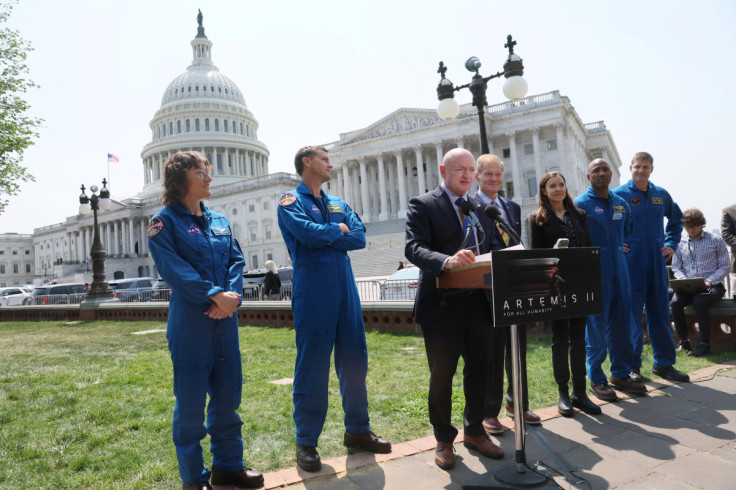NASA To Name Second Company To Build Astronaut Lunar Lander

U.S. space officials are set on Friday to reveal a second company that would build a spacecraft to send astronauts to and from the moon's surface, capping a high-stakes contest between groups that include Jeff Bezos' space firm Blue Origin and defense company Northrop Grumman.
NASA's decision will give the agency a second ride to the moon under its Artemis program, after it awarded Elon Musk's SpaceX $3 billion in 2021 to land astronauts on the moon for the first time since the final Apollo mission in 1972.
Those initial missions using SpaceX's Starship system are slated for later this decade.
Friday's announcement in Washington evokes deja vu for Amazon.com founder Bezos and defense contractor Dynetics Inc, the head of a partnership with Northrop Grumman.
Those companies lost out to SpaceX for the 2021 contract, part of an initial moon lander procurement program. NASA under that program said it could pick up to two companies, but blamed budget constraints for only going with SpaceX.
This new contract offers a second chance for Bezos, who since founding Blue Origin in 2000 has invested billions into the company to compete for high-profile commercial and government space contracts with SpaceX, a dominant force in satellite launches and human spaceflight.
After losing in 2021, Blue Origin unsuccessfully fought to overturn NASA's decision to ignore its Blue Moon lander, first with a watchdog agency and then in court.
Blue Origin and lawmakers had pressured NASA to award a second lunar lander contract to promote commercial competition and ensure the agency has a backup ride to the moon. NASA in early 2022 announced the program for a second lander contract.
NASA chief Bill Nelson said at the time: "I promised competition, so here it is."
Blue Origin has said little about its latest moon lander proposal beyond naming its corporate partners: Lockheed Martin, Boeing, spacecraft software firm Draper, and robotics firm Astrobotic.
Northrop Grumman, previously a key partner in Blue Origin's unsuccessful Blue Moon bid in 2021, switched teams to join its former rival Dynetics.
NASA's multi-spacecraft plan for the Artemis moonshots involves its Space Launch System rocket launching astronauts toward the moon aboard the Lockheed-built Orion capsule. That will dock in space with a lunar lander that will ferry the crew the rest of the way to the moon's surface.

© Copyright Thomson Reuters 2024. All rights reserved.











